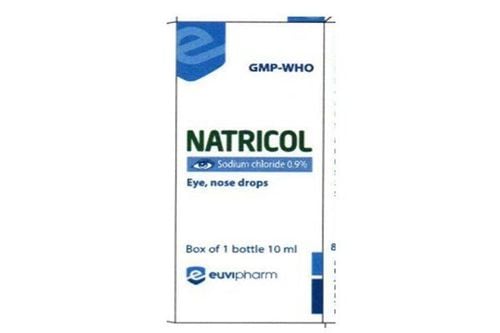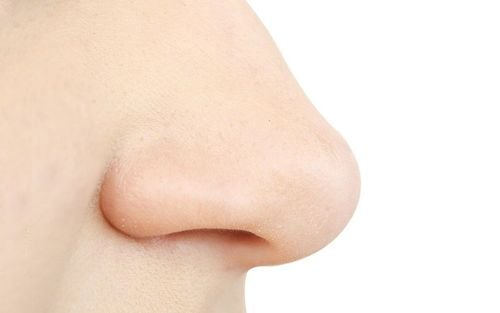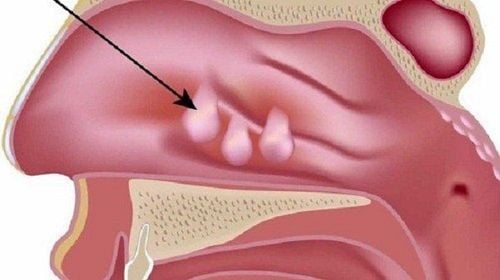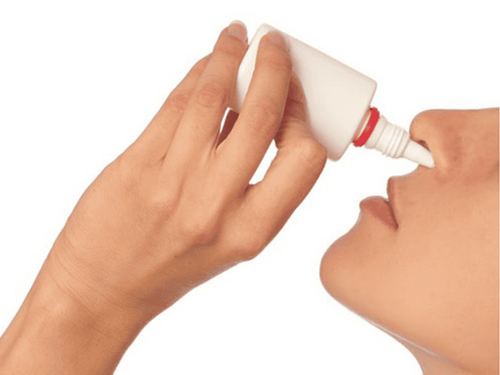This is an automatically translated article.
A person's nasal cartilage is reconstructed with wax. The lateral nasal cartilages or pistil fibers bend to varying degrees horizontally and upward over its lower border, where it presses. The curvature is greater anteriorly and gradually decreases posteriorly to the point where the cartilage lies flat. So how to know if the pistil fibers or nasal cartilage have developed?1. Nose Anatomy
The nose is the first part of the respiratory system, it is mainly responsible for conducting, cleaning and heating the air before entering the lungs through the mucous membrane with many blood vessels, mucous glands and lymphatic organizations. .The nose is the olfactory organ, which can perceive different odors. The nose consists of three parts: the outer nose, the inner nose, also known as the nasal cavity, and the paranasal sinuses.
1.1. Outer nose The outer nose is convex in the middle of each person's face, has a 3-sided pyramid shape, the smallest face is the 2 front nostrils, the remaining 2 pyramid faces are the 2 sides of the nose.
Above is the base of the nose, in between the eyes and a vertical ridge continuing from the base of the nose to the bottom is the bridge of the nose, the end is the tip of the nose. Behind the bridge of the nose is the nasal septum, the 2 sides are respectively 2 nostrils.
Between the nasal septum and the wings of the nose are 2 anterior nostrils. And between the wings of the nose and cheeks is the nasolabial fold.
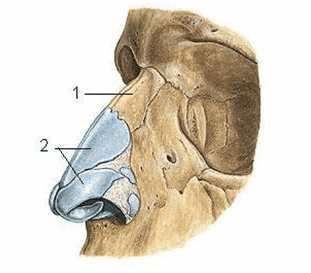
Khung xương sụn của mũi ngoài (1. Xương mũi 2. Các sụn mũi)
Each nasal cavity consists of 4 walls: inner wall, outer wall, upper wall and lower wall. There are many sinuses located in the adjacent bones that empty into the nose. The inner nose includes the following main components:
The nasal vestibule: The first part of the nasal cavity, slightly bulging and corresponding to the large alar cartilage. Most of the nasal vestibule is lined by a layer of hairy skin and mucous glands to prevent dust and foreign objects from entering the respiratory tract. Posterior nostril: This is the place of communication between the nasal cavity and the pharynx. Consists of 2 holes, separated by the nasal septum. The inner nasal wall: The inner nasal wall or nasal septum has two parts, the anterior part of the cartilage, including the ulnar column in the large alar cartilage (forming the lower movable membrane of the nasal septum) the nasal septum and the nasal cane cartilage. The posterior part of the bone is made up of vertical fragments of the ethmoid bone and the cane scapula.
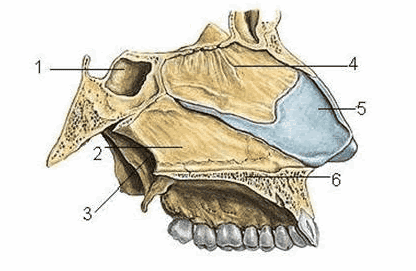
Thành trong của mũi (1. Xoang bướm 2. Xương lá mía 3. Lỗ mũi sau 4. Mảnh thẳng đứng xương sàng 5. Sụn vách mũi 6. Khẩu cái cứng)
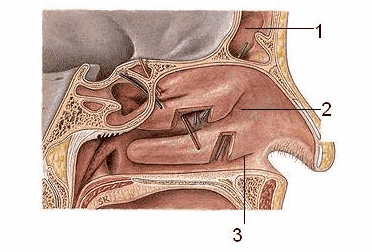
Thành ngoài ổ mũi (1. Xoang trán 2. Ngách mũi giữa 3. Ngách mũi dưới)
Maxillary sinus: The maxillary sinus is the largest sinus, located in the upper jaw bone and on both sides of the nasal cavity. The maxillary sinus drains into the nose at the middle nasal passage. Frontal sinus: The frontal sinus consists of 2 sinuses, right and left, separated by the frontal bone wall and often disproportionate, pouring into the middle nasal cavity through the frontal nasal canal. Ethnic sinus: The ethmoid sinus is located in the ethmoid labyrinth. There are 3-18 small sinuses, divided into 3 groups. The anterior and middle groups are commonly referred to as the anterior ethmoid sinuses that drain into the middle nasal cavity. The latter group is also called the posterior ethmoid sinus, which drains into the superior nasal cavity. Butterfly Sinus: The sphenoid sinus is located in the body of the sphenoid bone. Pour into the upper nasal passage or the top nasal passage.
2. Function of the nose
2.1. Respiratory The main function of the nose is to supply and regulate air to the rest of the respiratory system. Normal ventilation is a necessary condition for the normal functioning of respiration.The nose warms, humidifies and cleans the air thanks to the nasal mucosa, the network of blood vessels. Dust, germs, and small foreign bodies are retained in the nasal vestibule by nasal hairs and mucus. Hair cells move at a rate of 400 to 800 beats per minute. The air entering the lungs will be significantly purified. If you breathe through the mouth, foreign objects will go straight into the throat, larynx, trachea, bronchi and easily cause disease.
The cell system in the submucosa, produces phagocytes and immune fluids, such as IgE, IgG, IgA, IgM...
In addition, nasal breathing also has the effect of creating a negative pressure in the lower respiratory tract. This phenomenon ensures good ventilation in the lungs and introduces a larger volume of oxygen than when breathing through the mouth.
Complete or partial obstruction of the nose can lead to a number of respiratory diseases such as: pharyngitis, tracheitis, bronchiolitis, ...
2.2. The nose also plays a major role in the olfactory system. The nose is home to the olfactory nerve cells and is responsible for the human perception of smell. The olfactory function is performed by the olfactory mucosa in the upper chamber containing the olfactory glands and sensory neurons, with an area of 2-3 cm2.
The mucosa in this area is brick red, thin, with few glands, few blood vessels, few glandular hairs.
Odor substances dissolve in the mucous membrane on the sensory cells, creating stimulation to the olfactory nerve. Nerve cells are shaped like cilia. Normally, each person has about 1 billion olfactory cells. Therefore, the area of contact of odor molecules with the olfactory cells will be about 500 - 700 cm2.
Olfactory cells will be responsible for transferring those stimuli to the olfactory bulb. In the olfactory bulb there are cells that transmit impulses through the olfactory bulb and back to the olfactory centers in your cerebral cortex. These centers will be responsible for analyzing odors.
Smell is an instinctive and long-lasting sense of smell, which is called habituation. The nose is very vulnerable and prone to olfactory dysfunction. Nasal congestion often greatly affects the perception of odors. In addition, the sense of smell will stimulate the reflex to secrete saliva and gastric juice in the stomach.
2.3. Pronunciation Speech will normally be produced by pressure from the lungs. However, in some people it is possible to produce speech using air from the nose, known as nasal sounds. The nasal cavity will emit nasal voices and absorb the vibrations of the air during pronunciation and turn it into stimuli that govern the coordination of the pharyngeal and larynx muscles, which play a very important role in pronunciation.
In order to make sounds from the nose, we need to lower the roof of our mouth to emit vowels and consonants by allowing air to escape from the mouth and nose. The nose has an impact on the voice, creating the distinct timbre and reverberation of each person. When the nasal cavity is closed or the posterior or anterior nostrils are closed, the voice loses its resonance and changes in timbre, which is called a closed nasal voice.
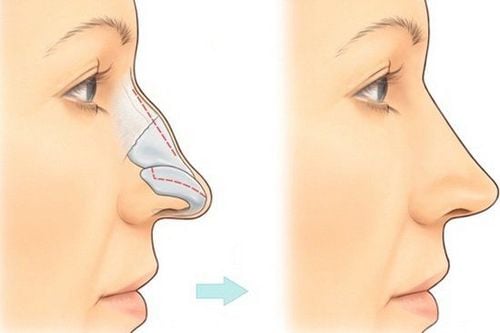
Sụn mũi cung cấp cấu trúc và nâng đỡ cho mũi
3. Anatomy and function of the nasal cartilage
The nasal cartilage provides structure and support to the nose. They are composed mainly of hyaline cartilage, which is densely packed with collagen, a structural protein, and several other components. Nasal cartilages can be divided into several types, including:Small nasal cartilages are small nasal cushions that connect the large nasal bones with the bilateral nasal cartilages Larger Alar cartilage is a flexible type of cartilage. , flexible, forming part of the structure of the nostrils. The alar cartilage, also known as the lateral nasal cartilage, has a triangular structure, located below the nasal bone. The septum cartilage - also known as the quadrangular cartilage because of its quadrangular appearance - separates the nostrils. It also connects the nasal bones and the lateral cartilages. The alar cartilage, also known as Jacobson's cartilage or Vomeronasal's cartilage, connects the nasal septum (the wall of cartilage that separates the two airways of the nose) and the scapula (a thin, flat piece of bone that separates the two nostrils). . This is the body's scent organ that detects pheromones, chemicals that can affect the behavior of others smelling them. The nose is mainly responsible for respiration, olfactory perception and pronunciation. Once the nose becomes inflamed and stuffy, they affect the normal functions of the nose. The cartilage inside the nose plays a very important role in shaping and supporting the nose, and creates the connections between the parts of the nose together into a unified whole.
Please dial HOTLINE for more information or register for an appointment HERE. Download MyVinmec app to make appointments faster and to manage your bookings easily.
References: Healthline, Youmed



